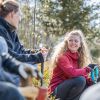Ecotourism in the land of the tiger
Tourists who visit Nam Et-Phou Louey National Park in Laos are helping to protect nature. Join us on a trip to this conservation area.
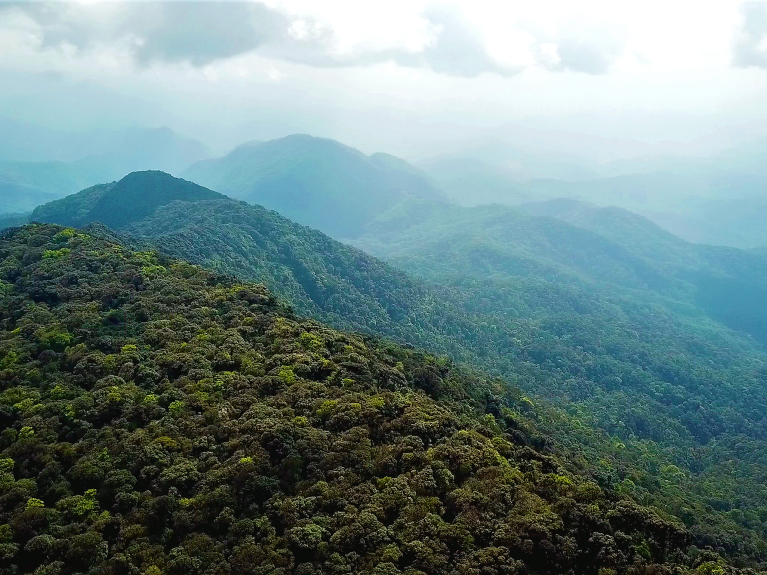
At an altitude of over 2,000 metres, little can be felt of the Laotian heat, but nobody escapes the humidity, not even here: visitors to the Nam Et-Phou Louey National Park (NEPL) hike through thick fog with their guide Somli Sivilay, flicking off leeches every few metres. But they are happy to put up with the leeches for such an amazing experience!
The so-called “Cloud Forest Climb” to the peak of Phou Louey at an altitude of 2,257 metres is an extremely demanding tour. The hikers are rewarded with a breathtaking view of the virgin rain forest and, with a bit of luck, an unusual sight. Spoiler alert: rarely does anyone actually spot a tiger, though there are plenty of other endangered species to see. Later food will be cooked on a camp fire – mostly things the tour guides have foraged along the way.
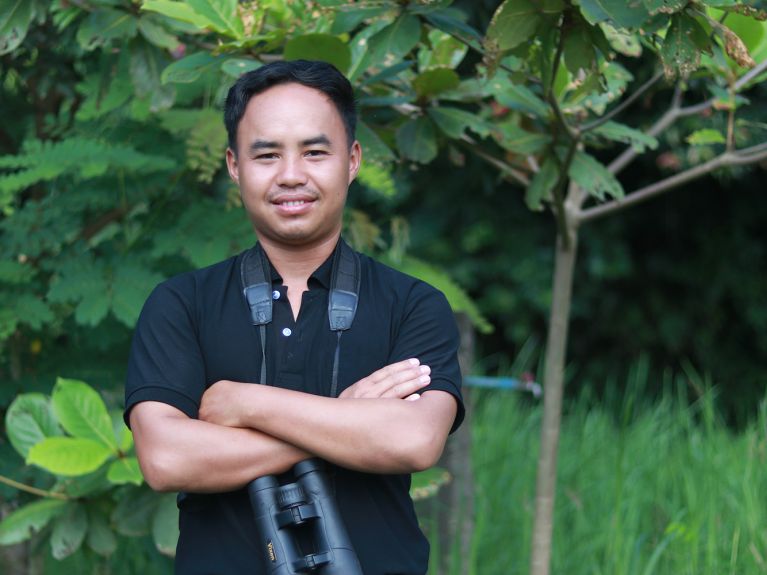
Somli Sivilay grew up in Houaphanh province in east Laos, a region characterised by dense mountain forests and protected areas. Most native inhabitants of the Nam Et-Phou Louey National Park are self-sufficient and live in harmony with nature. For many years, the reserve was plagued by poaching and illegal deforestation – this posed an existential threat to the people there, as they depend on natural resources. Ever since ecotourism was introduced in 2010, nature is back in the hands of the locals. This sustainable form of travel aims to reduce the often negative impact of tourism. Instead, conservation is promoted and tourists are taught about the area.
How does ecotourism work?
The project is a win-win situation for tourists, nature and villagers alike: anyone who books one of the trails pays into the “Ecotourism Benefit Fund”. Most of the money goes directly to the people who live in the region; in turn, they campaign for conservation. This is done by educating the population about the need to preserve nature: for some years now there has been careful resource management in land use. Patrol teams strictly control the area. Whenever an animal is sighted during the tours, either live or in the camera traps triggered by motion sensors, local people receive additional bonus payments from the fund. The fact that the protected area is now being given over to the animals is having a noticeable impact: almost four years after the scheme was introduced, 63 percent more endangered species are being sighted. They include for example the Asian dhole: “Often people forget about the dhole because they always have only the tiger in mind,” says Janina Bikova, the ecotourism adviser at the national park.
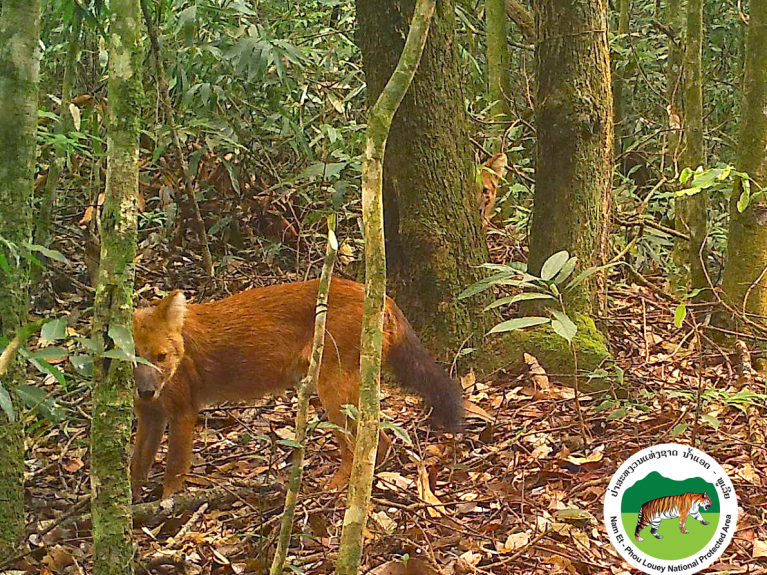
Supporters of the project include the European Union and the KfW Development Bank. Together with GIZ, the KfW helps the Laotian government with implementing strategies to protect forests and the climate. Thanks to the project, an effective administration team to manage the conservation activities has been set up in the national park with the support of the Wildlife Conservation Society (WCS).
Joining forces to help nature
Besides Janina Bikova, Souvit Chuekongya is also a member of the team. Since 2015 he has been the ecotourism officer at NEPL and, like Somli Sivilay, completed a national training course as a tourist guide in the capital Vientiane. With the support of WCS, the national park also offers such courses for rangers who combat illegal activities. Ecotourism also provides funding to teach the local people about the environment and prepare them to undertake protective activities. To this end, the area has been divided up into a strict protected zone and a controlled usage zone. In the latter, villagers are permitted to engage in limited agriculture, while preservation of the protected zone is monitored by the rangers. Chuekongya says that the region has changed since ecotourism was introduced: “Previously, villagers hunted to sell or simply to feed their families.”

More than 150 families from 26 villages are now part of the project. Former hunters are now guides, porters, cooks or boatmen. “However, only one person per household is allowed to be involved in one of the service groups – to prevent larger families from profiting more than others,” explains Chuekongya. For them, ecotourism is an additional revenue stream, farming being their main source of income. The idea is to limit illegal activities and ensure that villagers can remain independent.

Holidays in the trees and above the clouds
Thanks to the support of the WCS, other ecotourism programmes have been set up in recent years. One highlight is the 24-hour Nam Nern Night Safari. Park visitors spent the night in traditional bungalows, allowing them to learn about the lives of the people here and their stories, and then travel at night along the Nam Nern river when the chance of wildlife sightings is the greatest. The tour has already won the “World Responsible Tourism Award” twice.
The “Nest Trek”, the highpoint of which is spending the night in baskets dangling from trees, takes up to three days. Close to the camp is a salt lick where an observation tower has been erected. “Many animals feel undisturbed here, particularly at dawn. Sambar stags like to come here,” says Chuekongya. Visitors can also observe muntjacs, a small species of Asian deer, monitor lizards and porcupines.
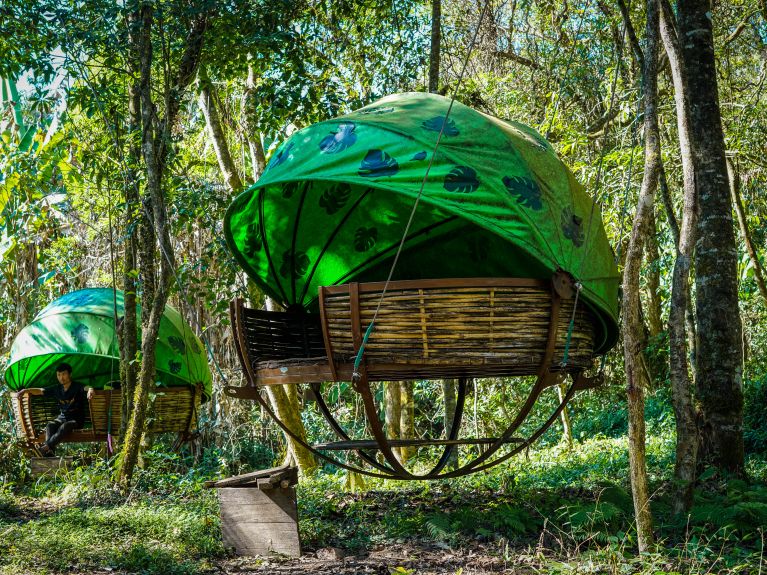
The toughest challenge is the five-day “Cloud Forest Climb”. It’s not called that for nothing, as the trek takes visitors through a long forest of dense cloud. Participants in this tour go deep into the strictly protected zone and at the end are given handwoven scarves as a souvenir. For the people who live in the NEPL, the greatest gift is when lots of tourists come – tourists who appreciate nature and want to learn from it.

